Table of Contents
This wonderful location has a long history that dates back to the 12th century, when a chapel to Our Lady of Pena was located there. The Royal Monastery of Our Lady of Pena was built on the same site at the behest of King Manuel I and afterwards transferred to the Hieronymite Order.

In addition, the 1854 completion of Sintra’s Palace of Pena Romanticist castle. On a clear day, Lisbon residents may see it because it is perched atop a hill above the town of Sintra. Every year, thousands of people travel to this national monument, known for its distinctive architectural elements and huge woodland park. Before you visit, continue reading to learn more about the Pena Palace’s history, sights, things to do, and much more.
Background of the Pena Palace
Prior to King Manuel I’s decision to construct a monastery that was given to the Order of Saint Jerome, the location of Pena Palace was a medieval chapel dedicated to Our Lady of Pena. However, the great Lisbon earthquake in the 18th century severely devastated it
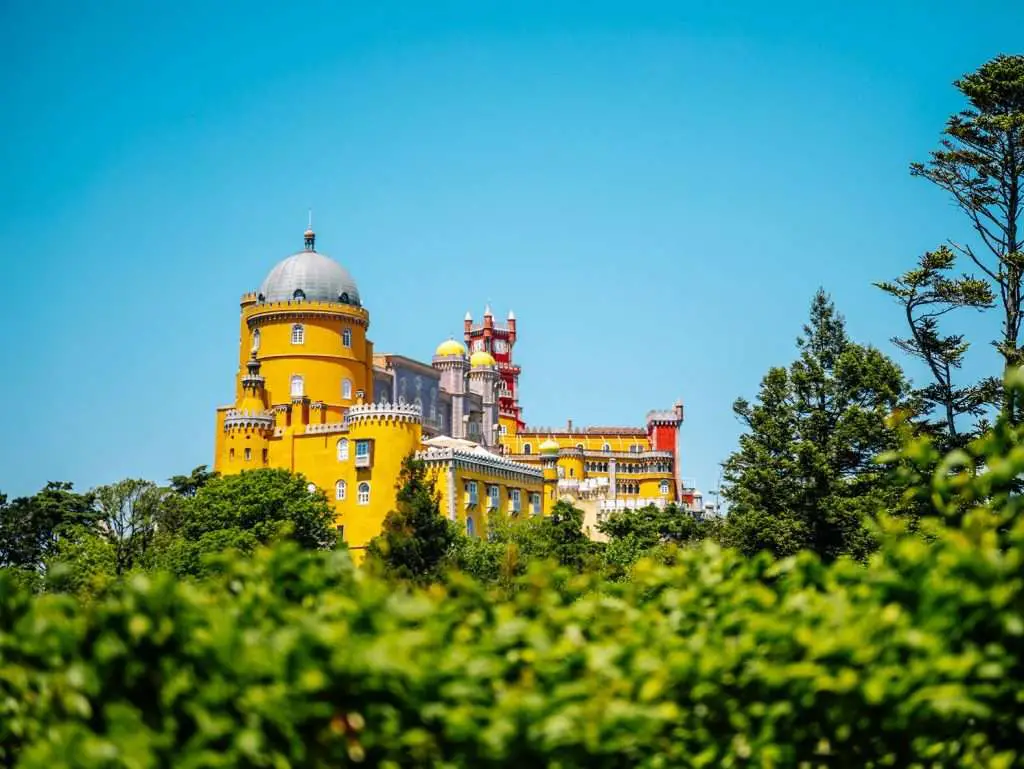
. Fortunately, the chapel avoided being destroyed at all, which surprised King Ferdinand II of Portugal. So, the king decided to buy the monastery and the land around it so that he could build the beautiful Pena Palace that still stands today.
The castle was constructed with the intention of being the king’s summer home. But following his passing, his second wife, Elisa Hensler, Countess of Edla, received ownership of the palace, and she later sold it to King Luis. In 1889, the Portuguese government bought it, and after it was named a national monument, it was turned into a museum.
The park in Palace of Pena
The 200 hectare-plus Pena Park surrounds the palace and is a sizable forested area. The park is full of walkways, hidden pathways, pavilions, lakes, ponds, and exotic trees that were created in accordance with King Ferdinand’s instructions, which is where the foreign flavor originates from.
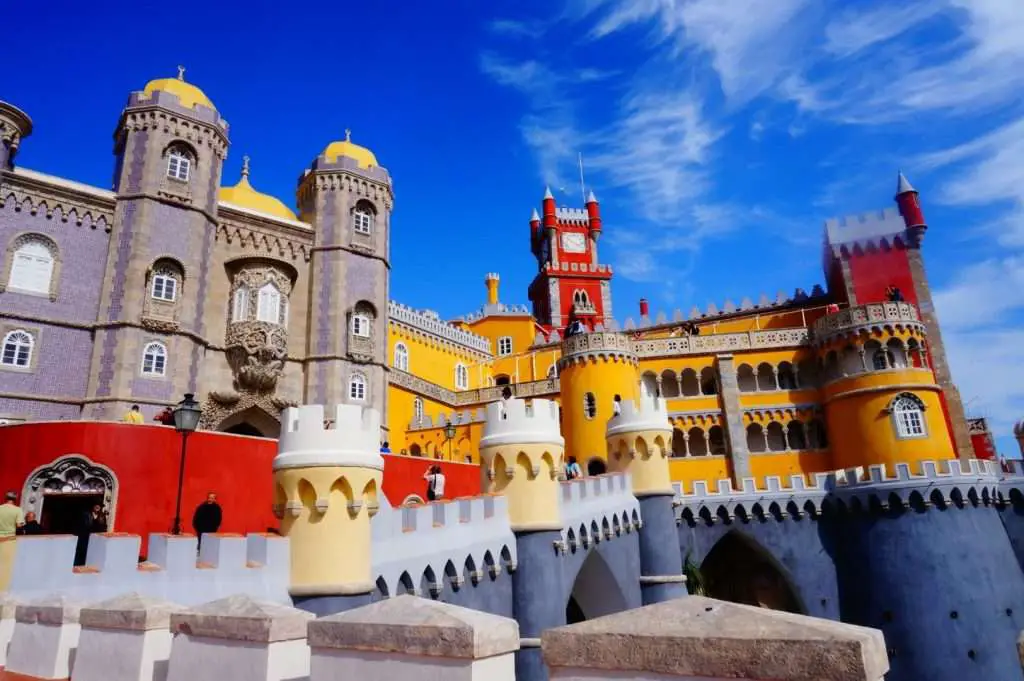
Among the exotic trees you really must see are:
1.American Sequoias
2.Chinese gingkos
3.African succulents
4.Ferns from Australia and New Zealand, including tree ferns.
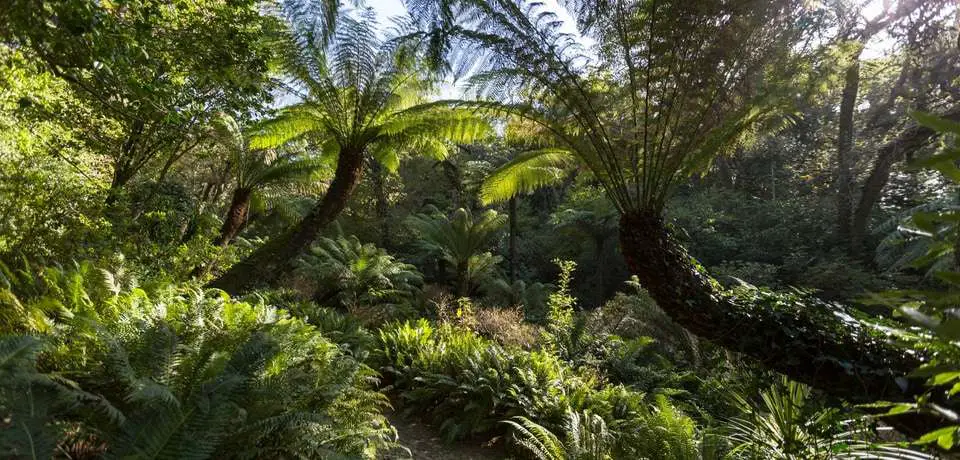
Pena Palace Construction
The Pena Palace is home to a wide variety of styles that strongly resemble the exotic tastes of Romanticism. It contains a variety of architectural styles, including Neo-Gothic, Neo-Manueline, New-Romanesque, and various Oriental forms, including Neo-Moorish and Indo-Gothic. The majority of these styles gained popularity following a significant reconstruction in the 1840s.
We’re on Facebook. Follow us!!
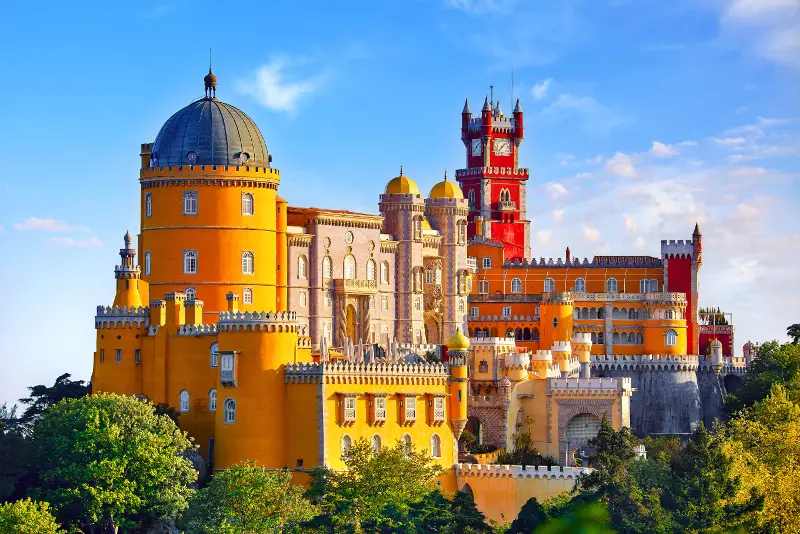
Many of the convent’s components, such as the cloister, dining hall, sacristy, and Manueline-Renaissance chapel, were still in good condition. All of it was afterwards relocated to the new palace wing with a broad and a clock tower. The Queen’s Terrace, which had a sundial cannon that once fired every day at noon, would undoubtedly be the main attraction. Later, in 1843, the clock tower was built.
When she learned of the Declaration of the Republic on October 5, 1910, Queen Amelie was in the Palace of Pena. From there, she traveled to Mafra to meet with her mother-in-law Maria Pia and her son Manuel before boarding the royal yacht D. Amelie in Ericeira and sailing to Gibraltar.
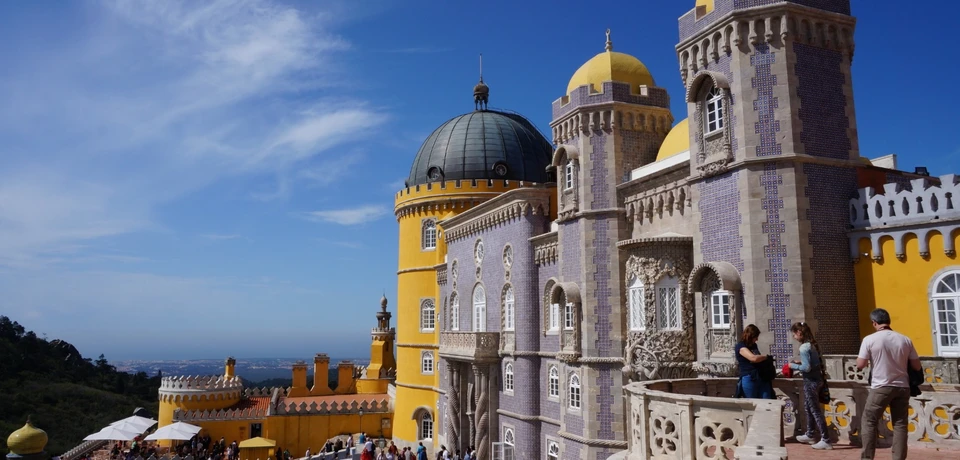
The Palace of Pena is the most important part of Sintra’s Cultural Landscape, which was named a UNESCO World Heritage Site in 1995. It was made a National Monument in 1910.
Prior to being tasked with managing the palace in 2007, Parques de Sintra assumed control of the Park of Pena in 2000. The National Palace of Pena joined the European Royal Residence Network in 2013.
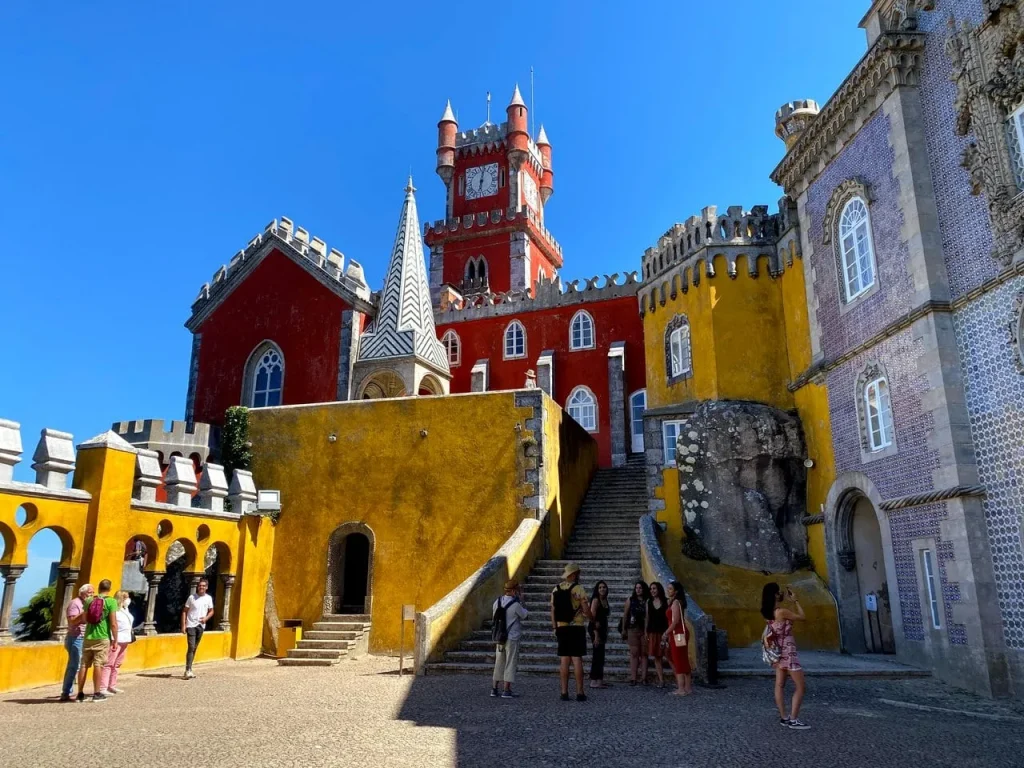
The reconstruction project for the Chalet of the Countess of Edla, which was honored in 2013 with the Europa Nostra-European Union Award for Cultural Heritage in the Conservation category-and the complete restoration of the Great Hall in the Palace of Pena, are just two examples of the ongoing work that Parques de Sintra has been doing to preserve, restore, and revalue the vast heritage incorporated into the Park and Palace of Pena over the years.
Source: penapalaceticket, parquesdesintra | Please DM for any further credits or removals
Read more from shutterbulky : Top 10 Most Beautiful Castles in Europe

1 comment
Im not certain where you are getting your information, however good topic. I needs to spend a while studying much more or understanding more. Thanks for magnificent information I used to be on the lookout for this information for my mission.